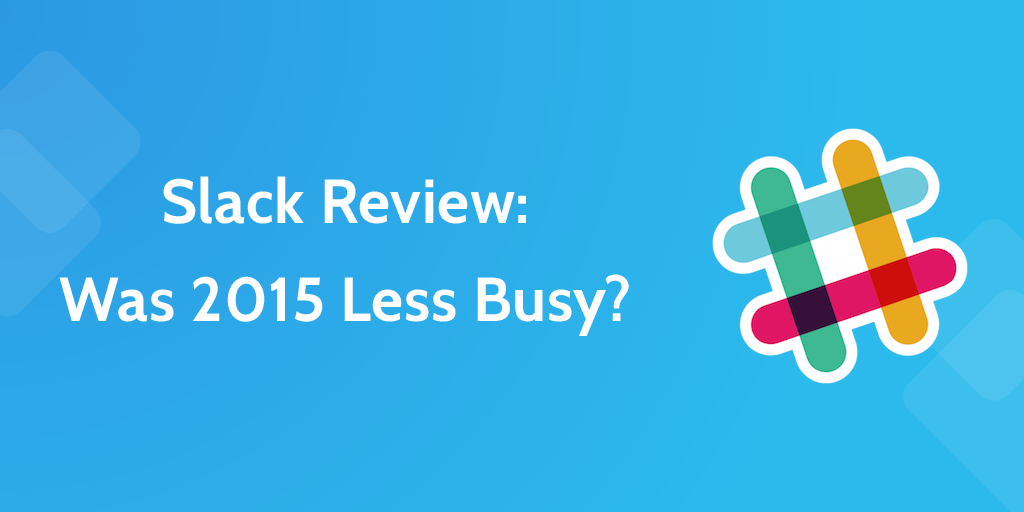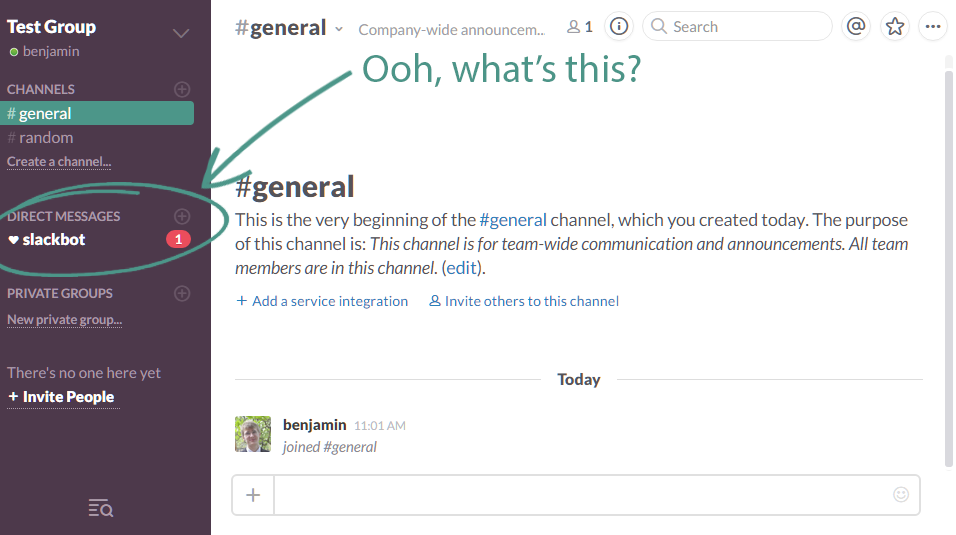
Another Slack review?
When I started using Slack to collaborate with the team at Process Street, I couldn’t tell you why it was so popular. The day I was hired we moved the work-related chat over from Skype to Slack so I could meet the team. It was a while before I actually understood why.
All the while, by internet buzz standards, it was obvious Slack was doing something right. A study with a sample size of 731 by Hiten Shah concluded Slack is a real market fit, with 51% of its users saying they’d be very disappointed if it no longer existed and 82% recommending the app to others — that’s a high NPS score, for sure.
The news is out that Slack’s value has risen to $2.8 billion, with explosive growth doubling the number of users since the start of 2015. The growth is so remarkable that the New York Times estimates it is the fastest growing business app of all time, and even though it’s just two years old, it’s debatable whether it’s really a startup anymore — it’s even running its first ad campaign.

Slack’s success has been reported enough – it’s the user experience that matters most, right? For the purposes of my Slack review, I’m not saying I rigorously exhausted the app’s uses and put every feature through its paces, I used it like a normal person might for the few things I needed it for.
Here’s what 2015 has been like.
First impressions
At first, I didn’t understand why we had to use Slack, but hey, I’m open to ideas and want to try as much software as possible. Opening it up for the first time it was easy to see what did what (thanks largely to its minimalist design), but not why I really needed it.

Slack felt like another place I had to check. Over time, I moved from Skype to Slack so decisively that now I use Skype just twice a week for calls but have the Slack app open, with notifications on my phone and desktop enabled.
There are more in the Process Street team, but private groups, such as content marketing, help me to filter by broad groups of employees and catch up with the progress of more people at once than I would when using Skype, or similar.
Integration with Trello
The first thing I found remarkable about Slack – my Aha! moment – is how it interacts with other apps. My main workflow area is a combination of Slack, Trello, and Process Street. They all speak to each other. When something is updated in Trello, it’s posted in Slack. When a team member makes progress on a checklist in Process Street, the channel is immediately notified about it.

Trello is one of the most useful tools for my workflow. While Process Street takes care of the individual tasks (‘cards’ on Trello), Trello tells me what exactly I should be doing. My whole working life is on there.
While things can get lost in the transient flow of Slack, they are anchored to Trello in a digestible way. I guess I treat Slack like a notifications system with messaging tacked on. Maybe it’s not the way it’s supposed to be treated, but it works for me.
Integration with Process Street
The number of options Slack keeps hidden away in its understated interface is huge. Even though its integrations are the feature I talk about most, I’ve hardly done them any justice. Slack can get feeds from a staggering amount of apps; MailChimp, Twitter, Intercom and niche stuff I’ve never heard of. At the time of writing this Slack review, there are over 80, with the API out now, we can expect a huge influx soon.
By integrating Zapier, a service designed specifically for getting apps to communicate with each other, the options are mind-bogglingly expansive. Here’s what our Zaps look like inside the Zapier interface.

That’s how we got Process Street to notify our teams on Slack when checklists are interacted with. This is the effect inside Slack:

Take at how Process Street integrates with Slack if you want to set up the same kind of system.
Integration with Twitter
Since we always want to know when someone’s talking about us, we have a Zap set up to post any Twitter mention of Process Street to its own channel, #ps-mentions. This is useful for keeping a look out for trends – what people are saying definitely dictates the content I write. Having it all in one place makes that super easy. For example, I get to see the number of shares my post on how to generate leads has without searching (and all in real-time).

Sure, there’s a lot more I could get out of this. I could set up IFTTT (a similar service to Zapier) to retweet anything posted in that Slack channel. I could probably do it through Zapier, too. It all depends on how much you want to automate and how much you want to curate. In the case of Trello and Process Street, there’s no sense curating notifications, especially if you’d have to look in 50 different places to see them otherwise.
Integration with my life
I’m a big fan. I didn’t used to be, but that was back before this happened, about a month after I started with Process Street:
 Yep, that was my a-ha! moment.
Yep, that was my a-ha! moment.
Seems pretty underwhelming, but that was some real excitement. After Vinay called and gave me a rundown of how Zapier worked, my brain exploded a bit. I realized that the way apps talk to each other using tools like Slack integrations, Zapier and IFTTT had huge implications.

Slackbot, Slack’s robotic greeter to help you set up your profile, is more than he appears (not in a sinister way). You can use the direct messaging channel as a general notepad that is searchable alongside the rest of Slack. For less practical reasons you can set Slackbot up to respond in public channels.

Slackbot’s responses don’t have to be just for fun. When you think about it, you could program Slack with a database of resources and let everyone know the commands. When a team member says: client database, Slackbot could attach the file with a Google Drive link. It all depends on how complex you want to get.
We’ve also had a bit of silly fun with Giphy. Typing /giphy cheers will pull a random gif from their database tagged ‘cheers’ and post it alongside the search term. Here’s an example:
Not the most productive feature Slack has to offer, but fun nonetheless!
Was 2015 a productive year?
Slack is a blank slate just waiting to be written all over. While it first just seems like a better-designed version of IRC, don’t let it fool you.
The adverts say ‘what it feels like to get 48% less email’, and one commenter on The Next Web came back with ‘what it feels like to get 634 chat messages a day’. To me, that doesn’t matter. It means that people are communicating, making friends and building a great company culture — which is especially important in remote teams.
So yes, I’ve set Slack up as a hub for all of my notifications, integrated it with other parts of my workflow and feel a lot more productive than before thanks to that.
Do you use the vanilla version of Slack, or have you tried customizing it? Let me know any cool things you’ve found out along the way.








Benjamin Brandall
Benjamin Brandall is a content marketer at Process Street.